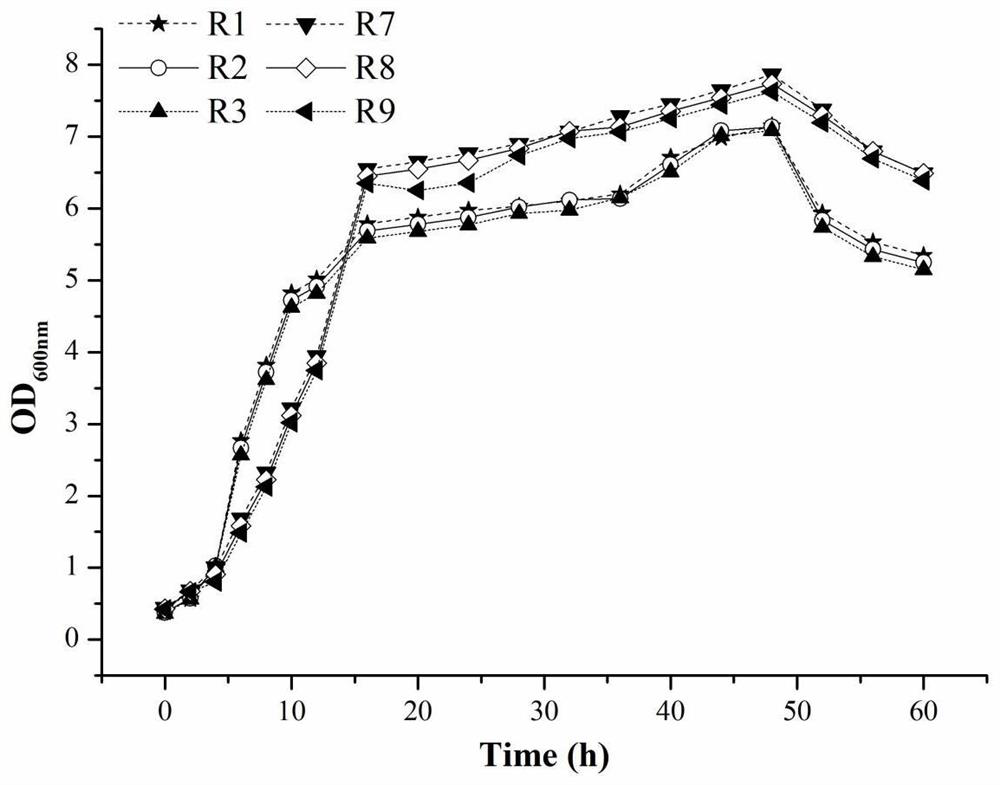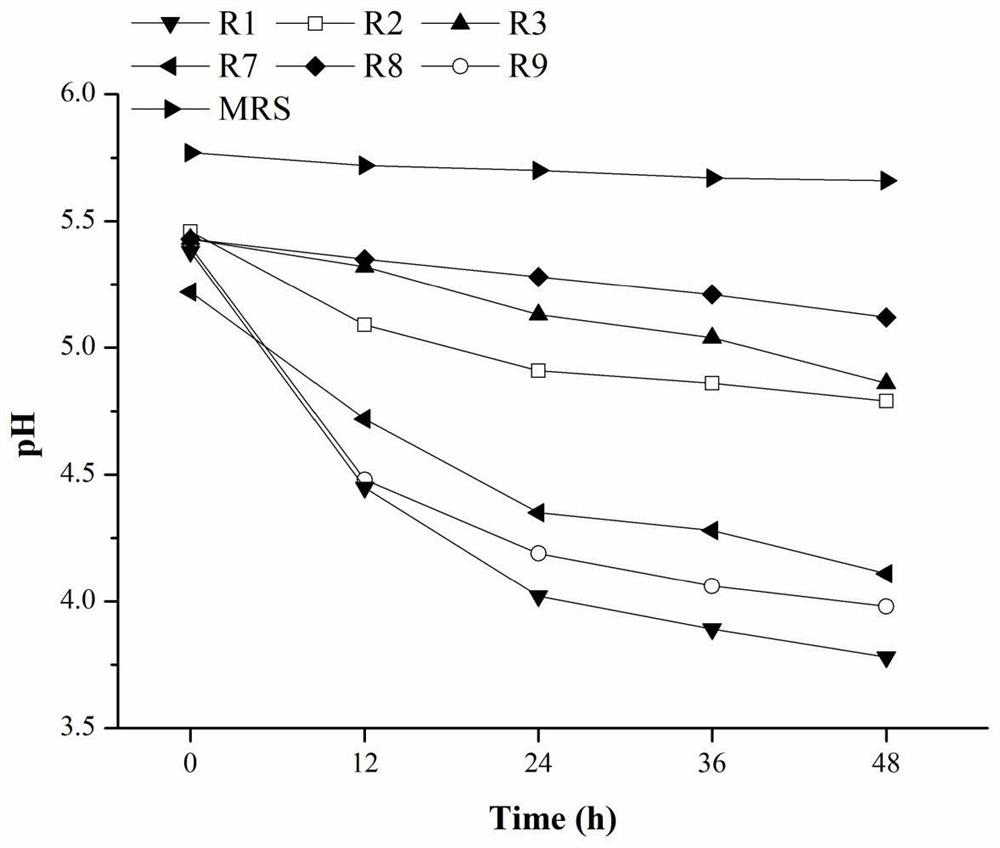Streptococcus thermophilus for inhibiting helicobacter pylori and application of streptococcus thermophilus
A technology of Streptococcus thermophilus and Lactobacillus acidophilus, applied in the field of applied microorganisms
- Summary
- Abstract
- Description
- Claims
- Application Information
AI Technical Summary
Problems solved by technology
Method used
Image
Examples
Embodiment 1
[0035] Example 1 Screening of strains and exploration of biological characteristics
[0036] 1. Strain screening
[0037] Take 10 samples of sauerkraut from a supermarket in Zhengzhou City, Henan Province, each 100.0g, take 5.0-10.0g of sauerkraut samples, put them into a 50.0mL centrifuge tube filled with 20.0mL of distilled water, and shake overnight at room temperature. Take 1.0 mL of the culture solution and make a 10-fold gradient dilution with sterile water to reach 10 -2 、10 -3 、10 -4 、10 -5 and 10 -6 , 0.1 mL of each gradient was evenly spread on the MRS plate, and cultured in a 37°C incubator for 48 hours; a suitable gradient growth plate was selected to pick out colonies with different colony morphological characteristics, and after two times of streaking, isolation and purification, 10 primary strains were obtained. Strains R1-R10 were screened.
[0038] The strains obtained from the preliminary screening were inoculated on 0.5% calcium carbonate-MRS solid med...
Embodiment 2
[0059] Embodiment 2 strain identification
[0060] (1) Colony characteristics
[0061] The cell morphology of strain R1 is: long rod-shaped, relatively thin, small colony (diameter about 0.5mm), milky white, raised, rough surface, and curled edges.
[0062] The cell morphology of the strain R9 is: spherical, arranged in chains of varying lengths and lengths, the colonies are off-white, with smooth surfaces and neat edges, and the size of the colonies is about 8mm.
[0063] According to the microscopic observation results of colony characteristics, it was judged that both R1 and R9 were bacteria.
[0064] (2) Molecular features
[0065] Single colonies of R1 and R9 strains were cultured at 37°C overnight, and fresh fermentation broth was taken for DNA extraction and PCR reaction.
[0066] PCR primers were 16S rRNA universal primers 27F and 1492R (27F: 5'-AGAGTTTGATCCTGGCTCAG-3' and 1492R: 5'-GGCTACCTTGTTACGACTT-3'). The PCR reaction system was prepared by sterile H 2 22 μL...
Embodiment 3
[0072] Example 3 Optimization of culture conditions
[0073] Fill a 250mL Erlenmeyer flask with 40% volume of MRS medium and adjust the initial pH to 6.2-6.5; after sterilization and cooling, insert 4% Lactobacillus acidophilus LA (R1) or 4% Streptococcus thermophilus ST (R9 ) seeds, after static culture at 37°C for 48 hours, the number of viable bacteria was detected by serial dilution and pouring method.
[0074] (1) Select 33°C, 35°C, 37°C, 39°C and 41°C for the culture temperature, and investigate the influence of the culture temperature on the fermentation. The results are as follows: Figure 6 shown. Depend on Figure 6 It can be seen that temperature has a great influence on the growth of strains in mixed fermentation. When the temperature is in the range of 33°C to 37°C, as the temperature rises, the number of viable bacteria in LA and ST increases gradually. At 37°C, the number of viable bacteria The number reached the highest, respectively 0.26×10 9 cfu / mL and 0....
PUM
| Property | Measurement | Unit |
|---|---|---|
| Diameter | aaaaa | aaaaa |
Abstract
Description
Claims
Application Information
 Login to view more
Login to view more - R&D Engineer
- R&D Manager
- IP Professional
- Industry Leading Data Capabilities
- Powerful AI technology
- Patent DNA Extraction
Browse by: Latest US Patents, China's latest patents, Technical Efficacy Thesaurus, Application Domain, Technology Topic.
© 2024 PatSnap. All rights reserved.Legal|Privacy policy|Modern Slavery Act Transparency Statement|Sitemap



